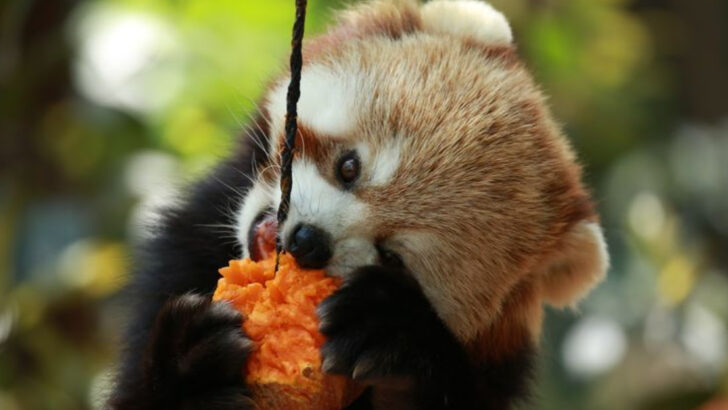They look like cuddly cartoons—but red pandas are survival pros in disguise. With fluffy tails and wide eyes, these creatures seem built for cuteness, not combat. But don’t let the charm fool you. Behind every wobble and whisker is a fierce little fighter built for life in the treetops. From bone-chilling Himalayan nights to shrinking forest homes, red pandas have mastered the art of adaptation. They’re clever, quiet, and armed with one of nature’s weirdest thumbs. So if you thought pandas were just black, white, and bamboo-obsessed—think again. These red rebels are rewriting the rules of survival, one climb at a time.
The Bamboo Diet
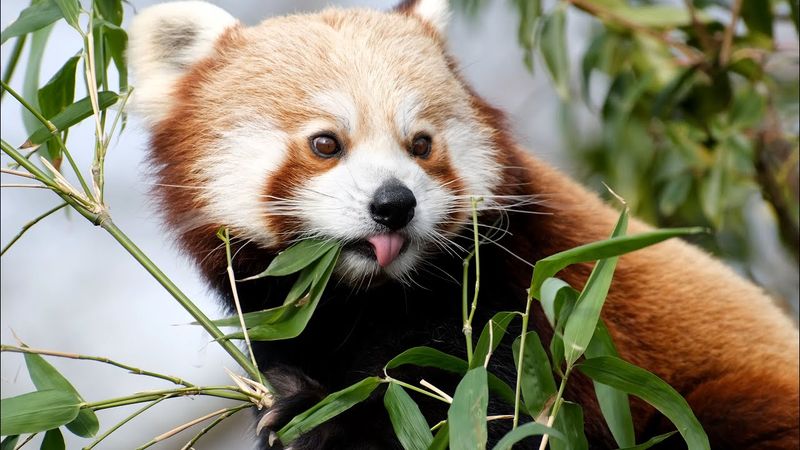
Red pandas primarily feast on bamboo, consuming almost 2 to 4 pounds daily. Despite their carnivore classification, their diet is overwhelmingly herbivorous. They have a pseudo-thumb, an extended wrist bone, which aids in grasping bamboo stems with remarkable dexterity. Intriguingly, their bamboo diet necessitates consuming vast quantities to meet their nutritional needs. This unique adaptation showcases their survival ingenuity in the dense forests. Unlike their giant panda cousins, red pandas diversify their diet occasionally with fruits, acorns, and eggs, illustrating their omnivorous versatility. Such dietary habits exemplify their ability to adapt in a changing environment.
The Solitary Wanderers
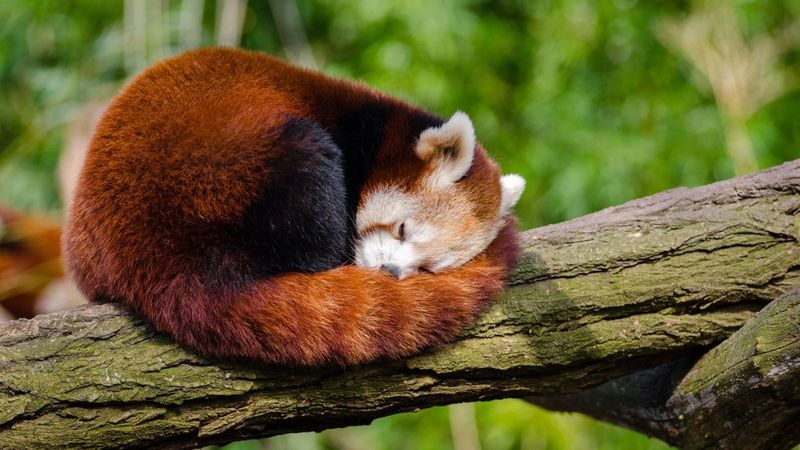
Red pandas are solitary creatures by nature, preferring their own company to that of a group. Their reclusive behavior is primarily observed during their foraging sessions. This solitary lifestyle reduces competition for the limited resources of their mountain habitats. They communicate through subtle vocalizations and scent markings to establish territory and social bonds. Interestingly, they become more social during the breeding season. This meditative solitude offers them a peaceful existence in their natural habitat, away from the chaos of modern civilization. Such independence highlights their adaptability and resilience in the wild.
Master Climbers

Renowned for their exceptional climbing skills, red pandas spend much of their time in trees. These arboreal antics are not merely for fun but serve as a vital survival strategy. By residing in trees, they evade predators and gain access to fresh foliage. Their sharp claws and flexible ankles allow them to descend headfirst from trees. This unique adaptation is rare among tree-dwelling mammals. Furthermore, their bushy tails provide balance, enhancing their agility. Such climbing expertise ensures they remain elusive to predators, embodying their inherent survival instincts. Their treetop lifestyle symbolizes their adaptability and resilience.
A Distinctive Appearance

With their reddish-brown fur, striking white facial markings, and bushy ringed tails, red pandas are undeniably captivating. Their unique appearance not only charms onlookers but also serves practical purposes. The reddish hue helps camouflage them among red moss and white lichen-covered trees. Their thick fur offers insulation against the cold, while the tail acts as a warm blanket. This distinct appearance has earned them cultural significance, featuring in various folklore and art. The red panda’s enchanting visage is more than just beauty; it’s a testament to their evolutionary adaptability and survival prowess.
The Art of Communication
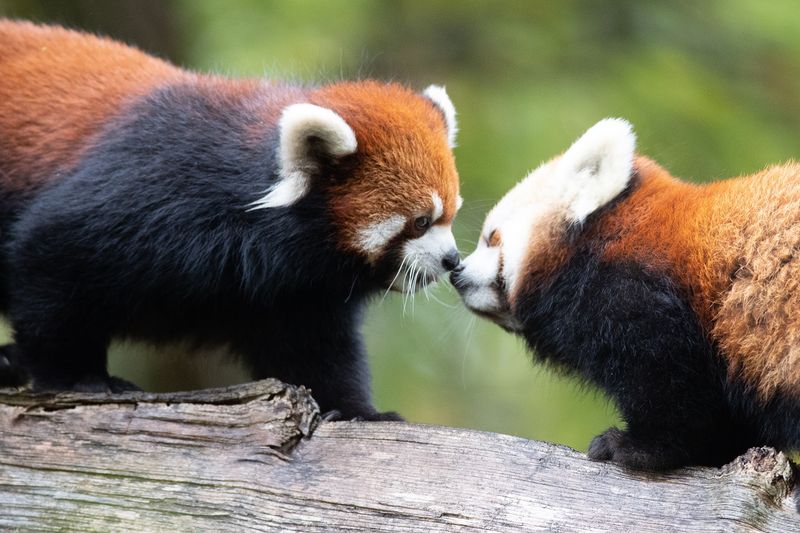
Red pandas communicate through a series of subtle vocalizations, such as squeals and whistles, complemented by scent markings made with anal glands. These scents are left on trees and rocks to signal territory and identity. Their communication is crucial for social interactions and mating rituals. Despite their solitary nature, they have a complex social structure during mating seasons. Their playful antics and vocal expressions further enhance their social bonds and ensure species continuation. This intricate network of communication highlights their intelligence and social adaptability, vital for survival in the wild.
Seasonal Adaptability
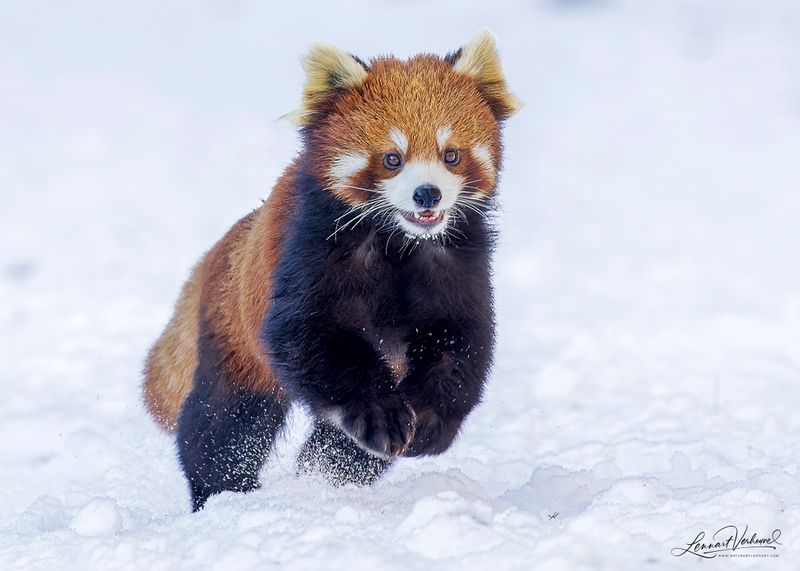
Red pandas exhibit remarkable adaptability to seasonal changes. During winter, their thick fur insulates against the cold, while in warmer months, they seek shade in dense canopies. Their multi-layered fur and bushy tails act as natural thermostats, regulating their body temperature. As the seasons shift, their activity patterns adjust, becoming more nocturnal during hotter months to avoid heat stress. This seasonal adaptability ensures their survival across varying climates. These behavioral and physiological adjustments exemplify their resilience and ability to thrive in diverse environments. Their adaptability is a testament to their enduring presence in their natural habitat.
The Tail as a Tool
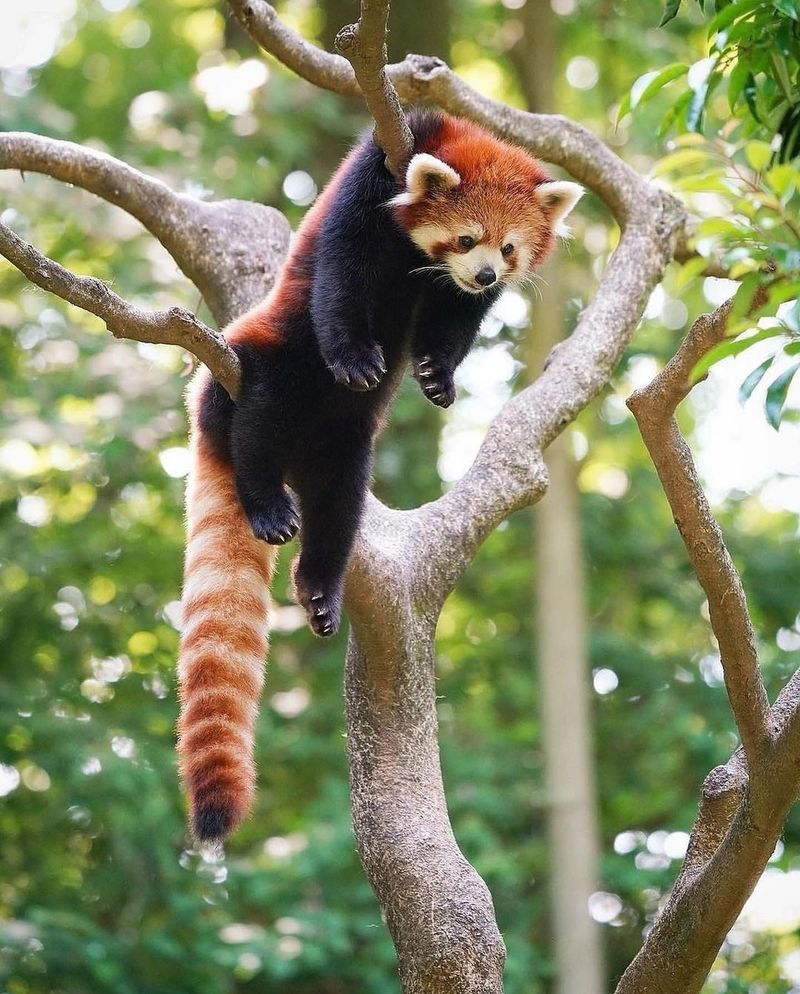
The red panda’s tail is not just a visual marvel; it’s a multifunctional tool. With an impressive length of up to 19 inches, it provides balance as they navigate tree canopies. In harsh winters, the tail wraps around its body, offering warmth. Additionally, its ringed pattern aids in camouflage among the forest foliage. This versatile appendage underscores the red panda’s ingenuity in using available resources for survival. The tail’s varied functions emphasize their adaptability and practical use of physical traits, making it an essential aspect of their daily survival and resilience in the wild.
Unique Eating Habits
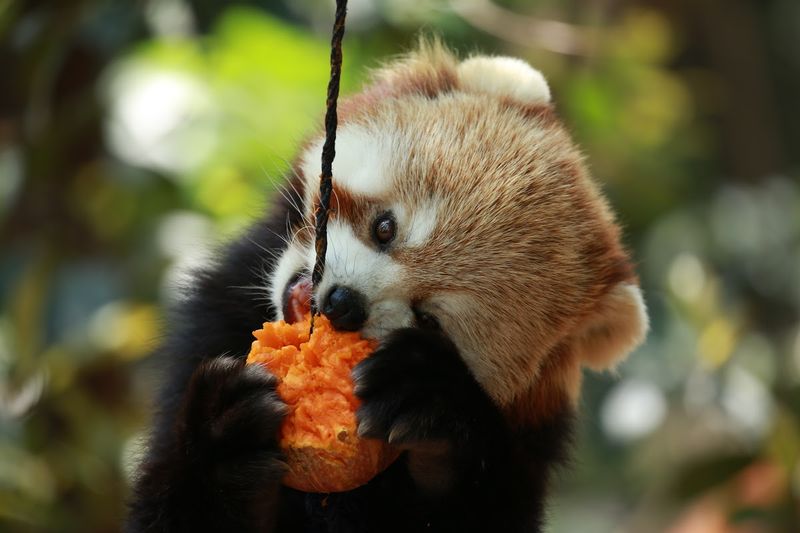
While primarily bamboo eaters, red pandas occasionally indulge in fruits, berries, and even small birds. This dietary diversity ensures they obtain necessary nutrients, especially during bamboo shortages. Their sharp teeth and strong jaws are adept at breaking through tough bamboo stalks and chomping on a variety of foods. This adaptability in feeding habits is crucial for their survival, allowing them to thrive in various environments. Their selective palate showcases their ability to adjust to different food sources, ensuring sustenance throughout the changing seasons. Such versatility in diet is a hallmark of their enduring survival capabilities.
The Quiet Conservationists
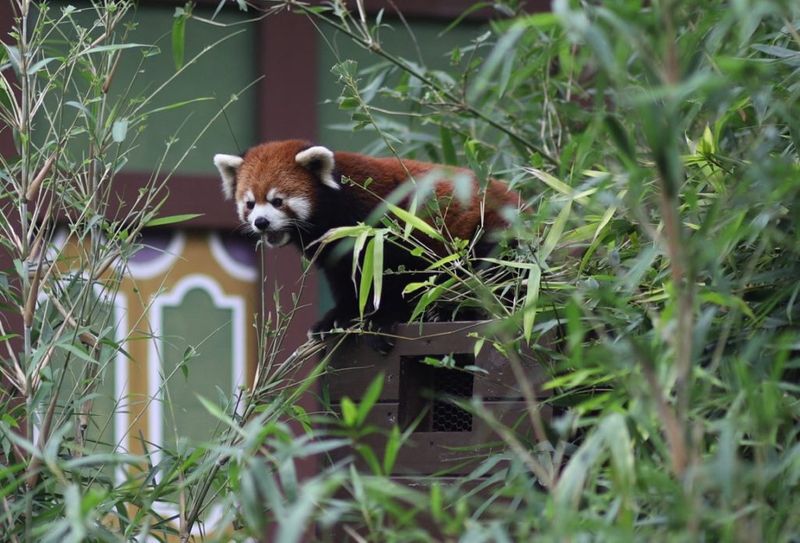
Red pandas play a crucial role in their ecosystem, indirectly aiding in forest conservation. By maintaining a balanced diet, they support the growth and health of bamboo forests. However, they face significant threats from habitat loss and poaching. Conservationists focus on habitat restoration and anti-poaching measures to protect these gentle creatures. Sanctuaries and breeding programs work tirelessly to ensure their continued existence. The red panda’s plight highlights the delicate balance of ecosystems and the importance of conservation. Their role as quiet conservationists underscores their significance in promoting biodiversity and environmental health.
A Symbol of Culture

In many cultures, red pandas are more than just animals; they’re symbols of balance, peace, and nature. They appear in folklore and are revered for their elusive yet enchanting presence. The red panda’s charm has inspired numerous cultural references, from art to conservation campaigns. In Bhutanese culture, they are seen as guardians of the forest, embodying harmony and resilience. This cultural significance reflects their deep connection to the natural world and human admiration. Their symbolic role emphasizes their impact beyond the ecological, inspiring awe and respect across generations.
The Enigma of Evolution

Despite sharing a name with the giant panda, red pandas belong to their own unique family, Ailuridae. Their evolutionary lineage is a subject of intrigue, with connections to raccoons and weasels. This distinct classification is a testament to their unique evolutionary path. Fossil records trace their ancestry back millions of years, unraveling the mysteries of their survival and adaptation. These evolutionary insights highlight their resilience and ability to navigate significant environmental changes. Their enigmatic evolution continues to inspire scientific curiosity and admiration, cementing their status as one of nature’s great survivors.
Endearing Playful Nature

Red pandas, especially the young, exhibit a playful demeanor that endears them to many. Their playful antics, from wrestling with siblings to playing with objects, showcase their curious and energetic spirit. This behavior is not only entertaining but serves developmental purposes, enhancing their motor skills and social bonds. Playful interactions are crucial for their growth, teaching them essential survival skills. Observing these playful behaviors provides a glimpse into their vibrant personalities and adaptability. This playful nature underscores their charm and the joy they bring to onlookers and conservationists alike.

